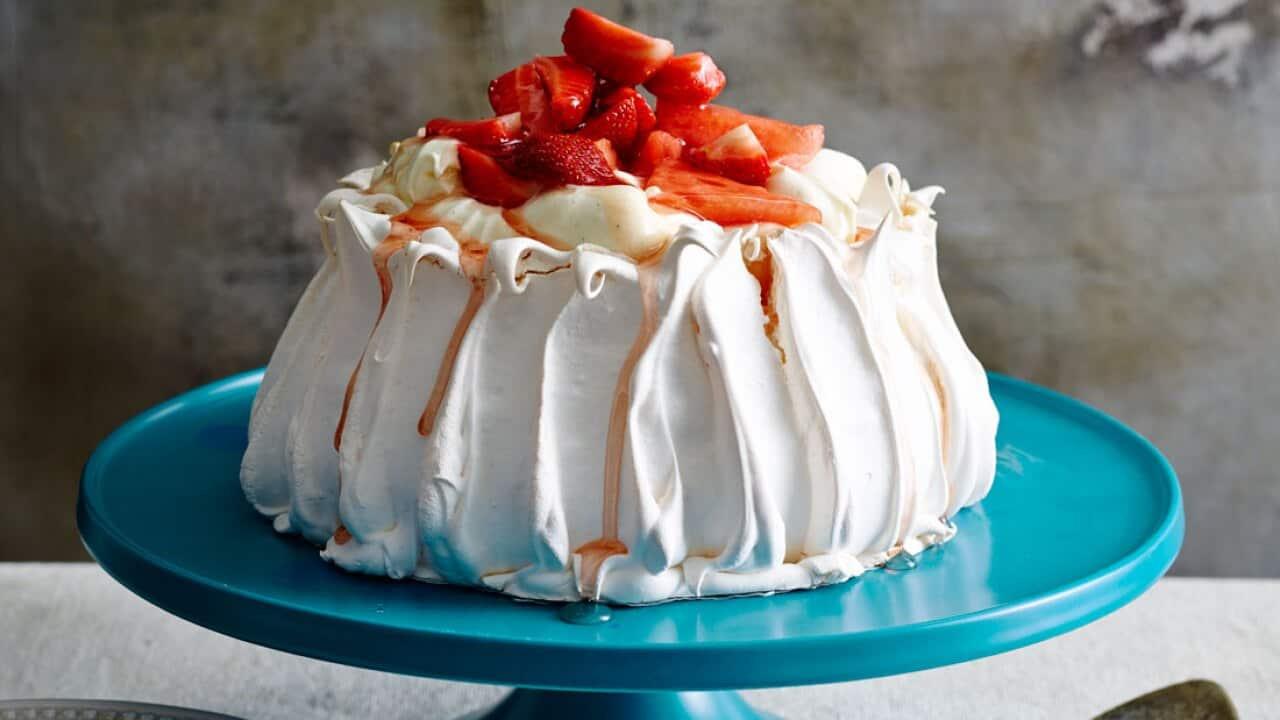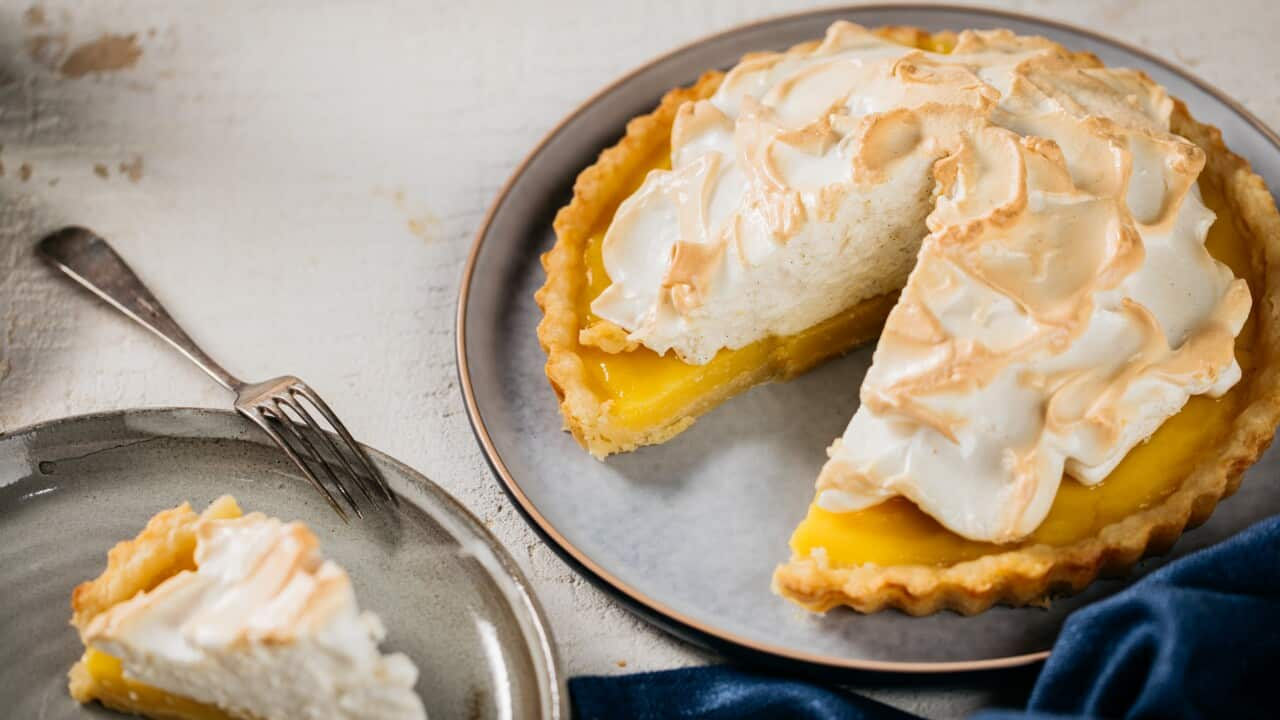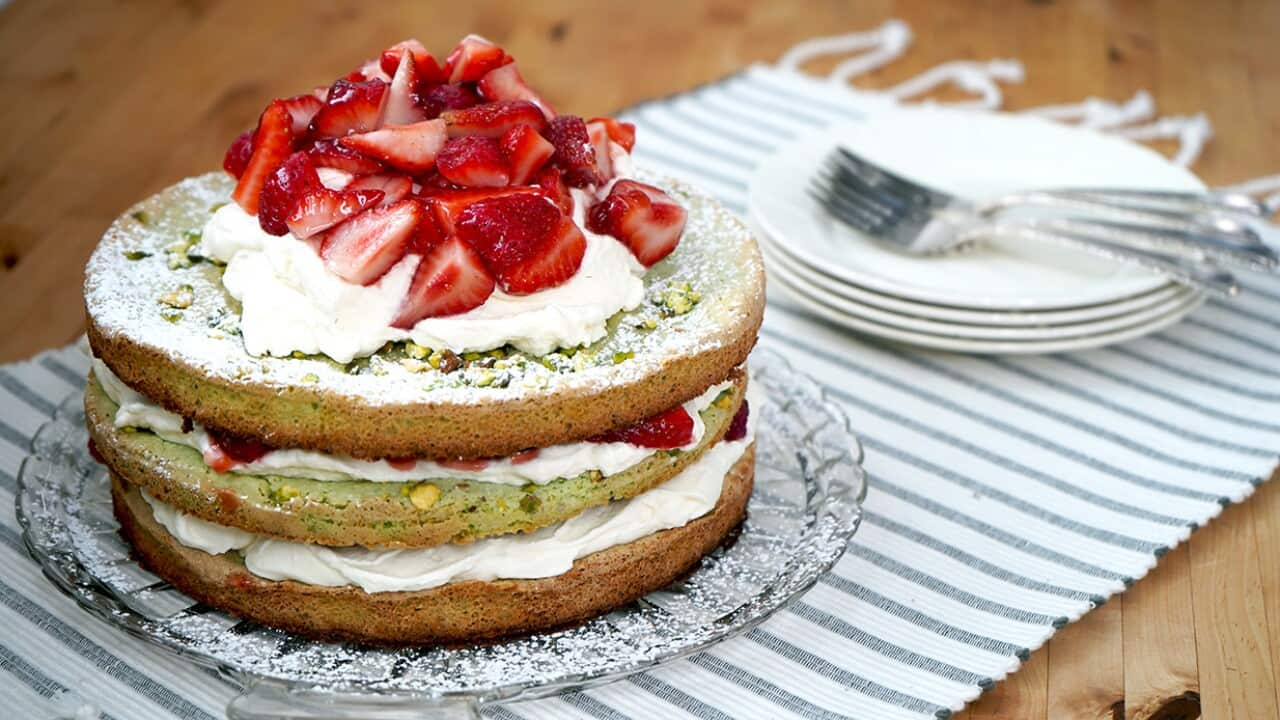--- 's fourth season airs weeknights on SBS Food (Ch33) at 7.00pm. All episodes available anytime on . ---
The friendly European Union neighbours – France, Switzerland and Italy – may interact nicely with each other. But confuse the meringues of either country and it could generate sugar-induced outrage.
That’s because when it comes to meringues, there should be no confusion. French, Swiss and Italian meringues are similar but they're also distinctly different.
As the host of tells viewers, all meringues use sugar and egg whites. However, Liaw says, “Swiss, French, and Italian differ in just how you combine these two ingredients".
French meringue
Executive chef at , Matt Hart who leads a world-class pastry team, explains that French meringue is a style most people would have tried if they’ve tasted pavlova.
“French meringue is also used for folding into light cake mixtures, mousses or sweet soufflés to add volume and air,” Hart tells SBS. “Otherwise French meringue can also be piped onto a baking sheet for a light, crisp cookie.”
Hart explains that French meringue is pretty simple to make. In fact, it’s the easiest meringue of the three as well as the lightest and least stable.
The downside to a French meringue is that some people will need to avoid eating it for health reasons. French meringues are served uncooked and therefore contain raw egg. This explains why pregnant women and the elderly are often told to steer clear of pavlovas at Christmas time.
Swiss meringue
A Swiss meringue is a cooked meringue. “This type requires you to heat your egg whites with sugar before whipping, resulting in a firmer, glossier meringue [compared to the French meringue],” says Hart.
He believes that Swiss meringue is best when whipped with butter to create a silky Swiss buttercream, which goes great on cakes.
“It's a good cooked meringue,” says Liaw. “Sometimes I find that the Swiss meringue can be a little bit soft, but it really is a marriage between two fabulous bits of chemistry. The sugar helps stabilise the meringue, so the more you dissolve the sugar into the meringue, the stronger your meringue gets.”
...Italian meringue is my go-to.
Italian meringue
Finally, there’s the Italian meringue. “It’s perhaps the most stable of the three, but requires a bit more technique,” Hart states.
“Italian meringue is almost marshmallowy in texture and taste. It’s also a great topper for desserts like lemon tarts or a classic bombe Alaska.”
To create a quality Italian meringue, you need to gently whip the egg whites separately while heating up a sugar and water mixture, which you then drizzle into the whites. “After whipping together to stiff peaks, you should have a smooth, thick meringue.”
Liaw states clearly he prefers Italian meringues over all others. “The cooked meringues, like the Italian and the Swiss tend to be a bit shiny, a bit smoother, which is why I like them,” adds Liaw. “But to me, Italian meringue is my go-to.”








